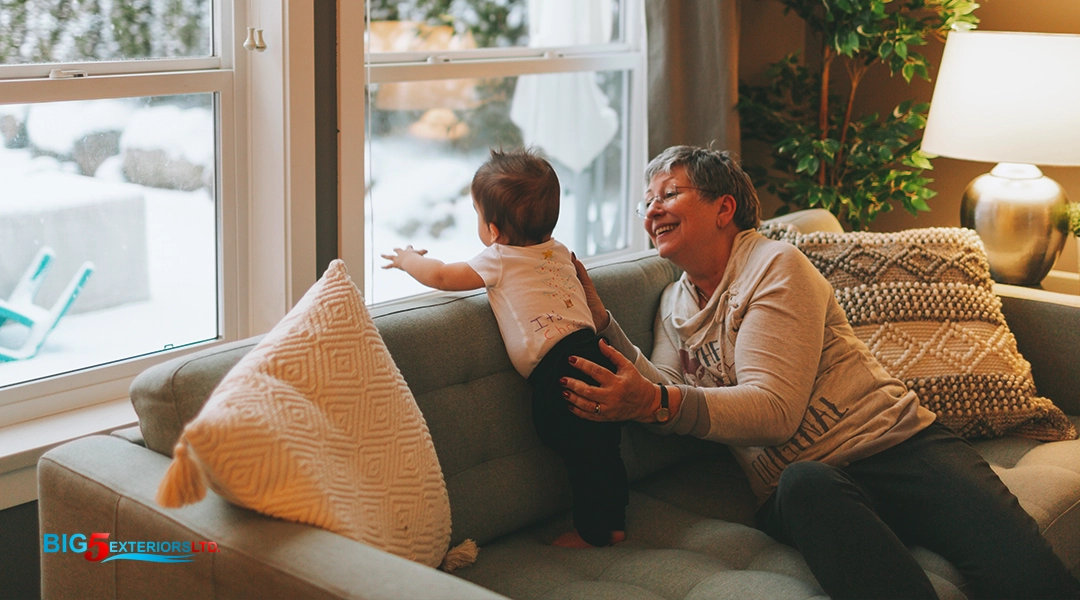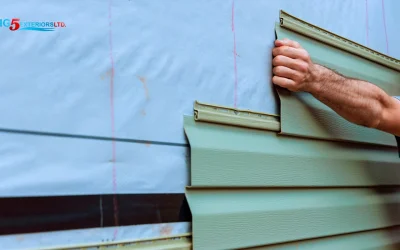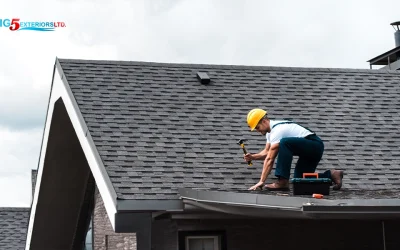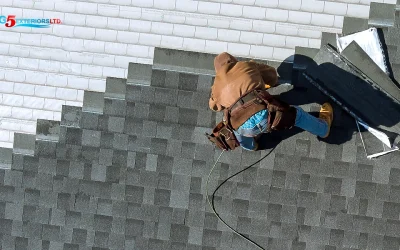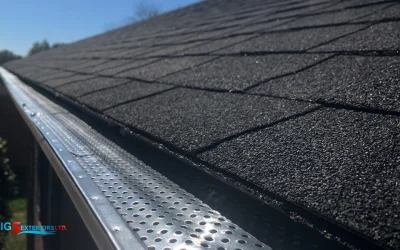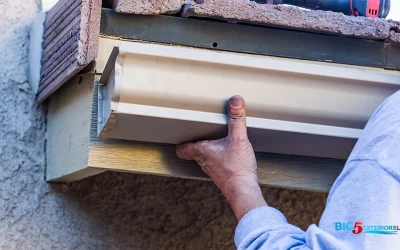Summary:
- Winter in Calgary can be hard on homes due to freeze-thaw cycles, snow, and ice dams—which can damage eavestroughs, downspouts, and siding, as well as other areas.
- To prepare eavestroughs for winter, either install high-quality gutter guards or regularly clean them to prevent clogging and ice dams. Big 5 can install Alu-Rex gutter guards that effectively prevent ice dams from forming in the wintertime.
- Downspout maintenance involves inspecting for damage and clogs, ensuring clear water flow to prevent backups, ice dams, and potential foundation damage.
- Siding should be checked for cracks or warping. If your siding is particularly damaged, consider upgrading to durable materials like Hardie Board.
- Winter preparation for lawns and garages includes aerating and fertilizing the lawn, removing debris, insulating the garage, and organizing stored items to prevent damage.
Winter in Calgary is often colder and longer than it is in other cities, and it can wreak havoc on unprepared homes. Freeze and thaw cycles, snow and ice dams, and other winter hazards can endanger your eavestroughs, downspouts, your siding, and more—unless you take steps to get ready ahead of time.
We’re here to help. At Big 5, we’ve been installing roofing and exteriors for Calgary homes for years, so we know all about the damage winter can create and how best to avoid it. Below, we’ve created a list of all the areas you should check to make sure your home is ready for the next Calgary cold snap.
See Also:
Winter Prep for Eavestroughs
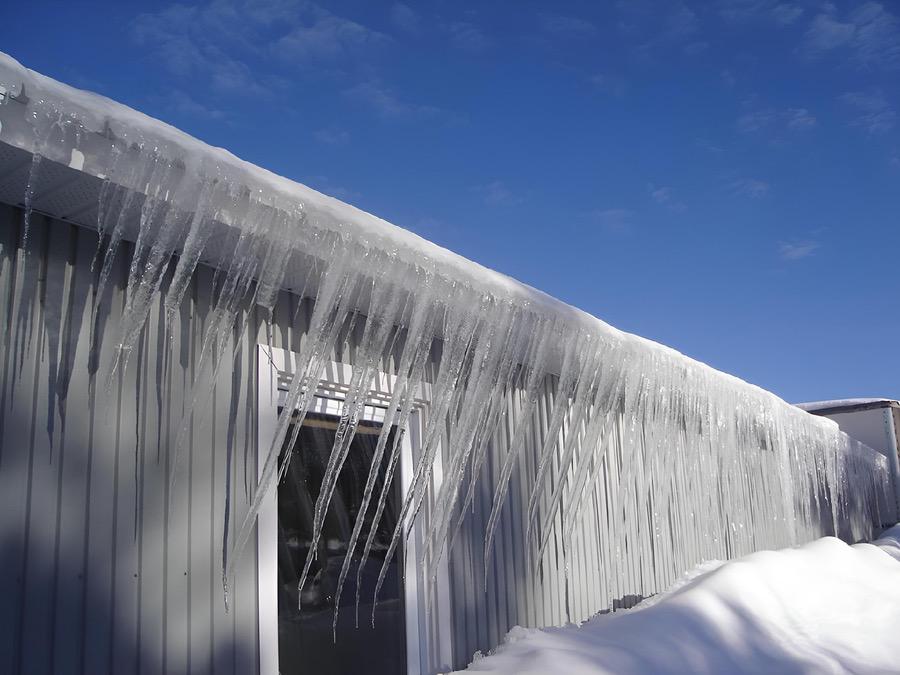
Why It Matters
Debris that builds up in eavestroughs before winter creates several problems:
- Eavestroughs clogged with debris prevent water from reaching the downspout. This can cause it to freeze in the eavestroughs and form ice dams.
- Debris and ice dams can both weigh down eavestroughing and eventually cause it to separate from the rest of your roofing system.
- During thaws, melting ice dams create high volumes of water that can spill down the sides of your home, pooling near the foundation and leading to structural damage over time.
What to Do
You’ve got two choices here, but we think there’s an obvious one:
- Install high-quality gutter guards like Alu-Rex leaf-free gutter systems from Big 5. These set-and-forget solutions use perforated metal filters to keep large debris on top of the gutter instead of letting it inside, so that wind can blow it off the roof and your drainage system never gets clogged.
- Clean your gutters before cold weather hits, and regularly inspect them throughout the winter. This can be time-consuming—and it can also be dangerous to climb onto your roof, especially when slippery snow and ice is a factor. Learn more about safely keeping your eavestroughs clean.
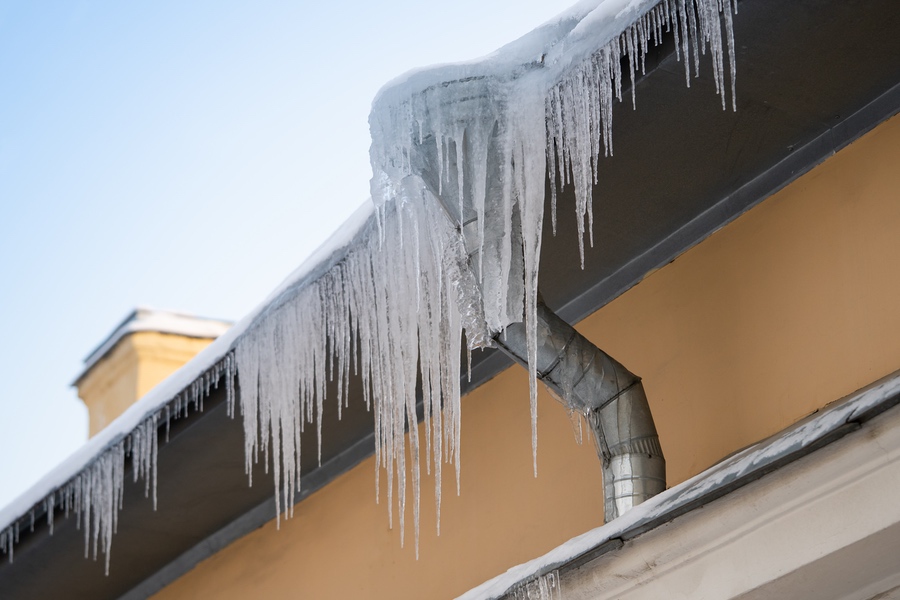
Winter Prep for Downspouts
Why It Matters
Your eavestroughing is only as good as your home’s downspouts. Water that flows into your eavestroughs is carried to the downspouts (most homes have one or two) and away from the home where it won’t erode the ground near your foundation.
But downspouts can experience several issues that put your roof’s drainage system at risk in cold weather:
- Blocked downspouts give water nowhere to go, causing it to back up in your eavestroughing.
- Water that backs up into your eavestroughs either flows over the sides and pools near the foundation, or freezes in cold weather and creates ice dams.
What to Do
You’ll want to check your downspouts for the following while the weather is still well above freezing:
- Look for dents and damage. Downspouts that have been severely damaged may not be able to provide a clear path for the volume of water that flows through your eavestroughs during freeze and thaw cycles.
A simple visual inspection is usually enough to notice this kind of damage. If you spot any major dents, use a hammer and a pair of pliers to pull the dented metal back into place and create a wide enough gap for water to flow.
- Check for clogs. Sometimes, downspouts become backed up by debris like twigs or leaves. Go outside when it’s raining and make sure you can see water coming out of your downspout.
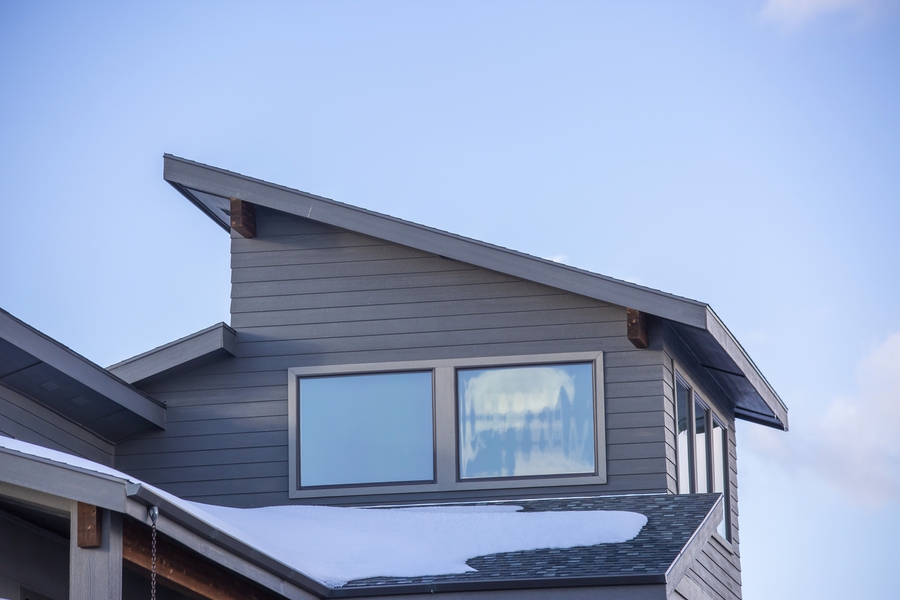
Winter Prep for Siding
Why It Matters
Calgary’s freezing temperatures and unexpected Chinook winds often cause siding materials to contract and expand, leading to cracks or warping. Here’s why that’s risky:
- Moisture from snow and ice can seep into cracks or seams, potentially causing rot, mold, or structural damage, especially as it thaws and refreezes.
- High winds during winter storms can also dislodge or damage siding panels, reducing their effectiveness in insulating and protecting your home.
What to Do
Before winter hits, inspect your siding for any signs of damage, such as cracks, loose panels, or warping. Then, take a few steps to touch your siding up so that winter won’t wreck it:
- Ensure all seams and gaps are properly sealed to prevent moisture intrusion. This can also help improve energy efficiency by reducing drafts.
- Clean your siding by removing any accumulated dirt, debris, or mildew. You can use a simple hose and damp cloth for this. It maintains the appearance of your home and also prevents long-term damage.
- Consider upgrading. If your siding is old or prone to winter damage, consider upgrading to more durable materials like Hardie Board, which offers superior protection against the elements. See how Hardie Board compares to other siding options.
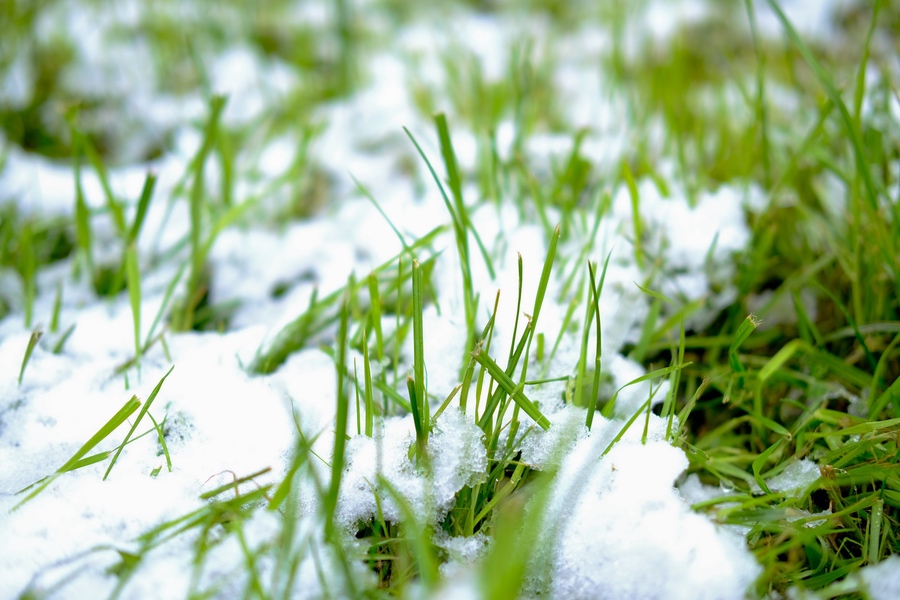
Winter Prep for Lawns & Garages
Why It Matters
Calgary winters can be tough on lawns. Without proper preparation, your grass may struggle to survive the freezing temperatures, leading to a less healthy lawn in spring.
Garages can suffer from freezing temperatures too. Pipes can freeze, and stored items can be damaged. Plus, a poorly insulated garage can lead to higher energy costs.
What to Do
For Lawns
- Aerate your lawn to improve drainage and apply a winter fertilizer to give your grass the nutrients it needs to survive the winter.
- Remove leaves and debris to prevent mold and disease.
- Put away sprinklers and hose nozzles to prevent any water inside from freezing.
- Mow the lawn before winter to keep the grass at an appropriate height. This reduces the risk of snow mold.
- Place your snow shovel near your door so it’s ready to go when you need it.
For Garages
- Insulate your garage to protect it against the cold.
- Check for and seal any gaps where heat can escape or moisture can enter.
- Store chemicals and liquids that can freeze in a warmer area and organize your garage to prevent damage to stored items.
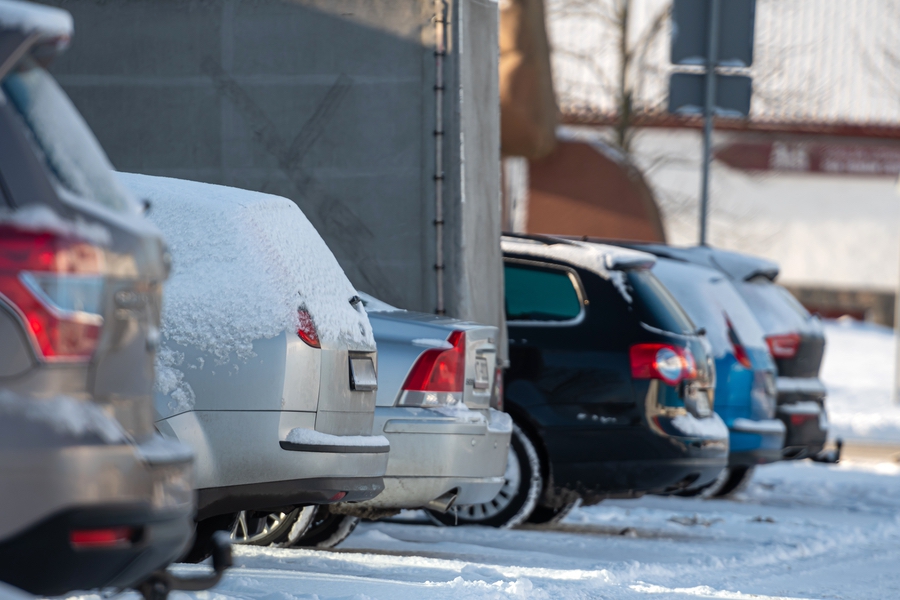
Winter Prep for Vehicles
Why It Matters
Vehicles are particularly vulnerable to the cold, snow, and ice of Calgary winters. Issues range from decreased battery performance to increased wear on tires and brakes.
Proper preparation can prevent breakdowns and accidents and extend the life of your vehicle.
What to Do
- Install winter tires for better traction on snowy and icy roads.
- Test your battery. Cold weather can drain a car battery quickly, so have it checked and replaced if necessary.
- Check all fluids, especially antifreeze and windshield washer fluid. Make sure they’re at appropriate levels and suited for low temperatures.
- Keep an emergency kit in your car with items like blankets, a flashlight, a first-aid kit, and some basic tools.
Get Help Preparing for Calgary’s Cold Weather
Your household doesn’t have to suffer when temperatures in Calgary plummet—use the steps above to check key areas of your property and be proactive about protecting your investments.
For help with your roofing, eavestroughing, downspouts, or siding, our team at Big 5 can help. Contact us for a free up-front quote or browse the FAQ below to learn more about how our work can help you keep winter weather from causing problems.
Frequently Asked Questions about Cold Weather for Calgary Homes
When should I start preparing my home for winter in Calgary?
Calgary can get snow as early in the year as September—it isn’t common, but it can still happen. We recommend doing your essential winter prep for roofing, eavestroughing, and siding at the end of the summer and making sure everything is ready before November.
When does Calgary go below freezing at night?
Calgary temperatures can go below freezing at any time of year between October and December—so make sure all water fixtures (like sprinklers and hoses) are put away before September ends.
Do gutter guards protect against ice dams?
The short answer is, it depends what kind you get. The Alu-Rex gutter protection systems we install at Big 5 use perforated aluminum filters to prevent the clogs that cause water to back up and freeze in gutters, effectively removing the risk of ice dams.
What kind of siding offers the best protection against freeze and thaw cycles?
We recommend Hardie Board siding for Calgary homeowners who want their siding to look great and last for years. Hardie Board is made from fiber cement that offers considerably better durability than vinyl in a much wider range of temperatures. It’s also fire-resistant and requires almost no maintenance.

